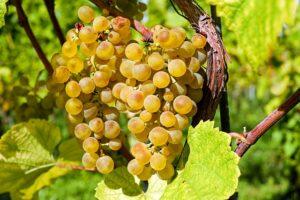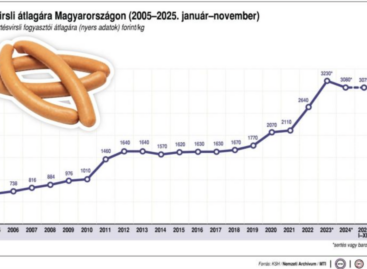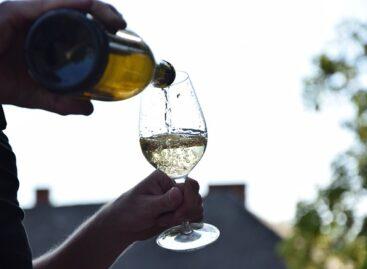Table grapes can be one of the winners of climate change
While fruit growing is becoming more and more unpredictable due to hectic weather conditions, the cultivation of dessert grapes poses fewer environmental risks, and its ecological adaptability is also favorable. According to the National Chamber of Agriculture and the Hungarian Fruit and Vegetable Association (FruitVeB), we also need to overcome economic and market difficulties in order to develop the sector.

(Photo: Pixabay)
Although grape growing has traditionally enjoyed great popularity in our country, farmers continue to cultivate wine grapes in the largest area. The main reason for this is that our country is located on the northern border of grape growing. However, due to the constantly changing climatic conditions, the cultivation of table grapes intended for eating purposes may gain more and more space.
In our country, table grapes are currently grown on about 370 hectares
The three most important production areas are Bács-Kiskun county, Heves county and Tolna county. At the same time, a larger quantity of varieties classified as wine grapes, but also suitable for fresh consumption, is used for food purposes. Thus, the vineyard area used for food production amounts to approximately 900-1,000 hectares per year. But this is classically only a forced situation, because table grapes intended for eating should be provided from plantations of varieties bred for this purpose. The amount produced annually exceeded 10,000 tons ten years ago, but in recent years it has typically been between 5,000 and 10,000 tons. Domestic consumption is 20-25 thousand tons, so we need to import 10-12 thousand tons every year, so there is something to replace with domestic produce. However, according to the National Chamber of Agriculture and the Hungarian Fruit and Vegetable Association (FruitVeB), this area may increase in the future. All of this can be encouraged by the support opportunities and horticultural plantation planting tenders available in the case of table grapes.
The negative effects of climate change are also hard to bear for our horticultural plants
However, there are species that are particularly favored or less harmed by climate change. As a result of the changed climatic conditions, the cultivation of most fruit species in our country is becoming more and more unpredictable, despite all the efforts of the farmers. The cultivation of table grapes, on the other hand, poses significantly less environmental risk. We have few plants that can be successfully grown in our continental climate, but table grapes should definitely be listed here, the industrial cultivation of which is more relevant today than at any time 100 years ago. The typically very late flowering largely avoids the spring frosty period, its deep-penetrating root system tolerates the summer heat well, and the fruits do not seem to suffer during the often months-long drought. In the extended warm autumn months, the late varieties also fully ripen.
We don’t have to be ashamed of the intellectual background of table grape breeding either, remarkable grape varieties are born at the level of research institutes as well as private breeders
There are currently 43 state-certified dessert grape varieties in the National Register of Varieties. Thanks to the ripening time of the varieties, we get a continuous ripening sequence, so grapes consumed as fruit are guaranteed from the end of July to the end of October. Csabagyöngye, Queen of the Vineyards muscat, Saszlák (chasselas) are popular among the early ripening ones, Pölöskei muscatály, Attila, Pannónia kincse from the middle ripening ones, and Hamburg Muscatály, Afuz Ali, and Moldova among the late ripening ones. But all these varieties seem outdated, because consumer expectations are changing following the world trend. Today, seedlessness is almost a basic requirement for table grapes. Thus, this requirement must be taken into account during domestic breeding (production of table grape varieties) and in the case of table grape plantings.
The market demand for table grapes also justifies the development of domestic cultivation
In Hungary, table grape consumption per capita is 2.5-3 kilograms per year and is constantly increasing. A significant part of this currently has to be provided by imports. However, we can compete against the table grape-producing countries that dictate market prices and force great price competition, and which are much larger than our country, from which most of the imports originate – Italy, Spain and Greece – if our efficiency (specific yields) improves significantly. There is also a need for a significant increase in sectoral organization, as fragmented production and sales cannot prevail against the concentrated dimensions of retail: a significant concentration of commodity funds is also needed on the production side.
NAK
Related news
NAK: it’s worth buying Hungarian sausages on New Year’s Eve too
🎧 Hallgasd a cikket: Lejátszás Szünet Folytatás Leállítás Nyelv: Auto…
Read more >This year, 10 percent more new wine was produced than last year
🎧 Hallgasd a cikket: Lejátszás Szünet Folytatás Leállítás Nyelv: Auto…
Read more >AM: Government helps farmers with a loan moratorium
🎧 Hallgasd a cikket: Lejátszás Szünet Folytatás Leállítás Nyelv: Auto…
Read more >Related news
New Year’s Eve: shortened opening hours in stores – general store closure on January 1
🎧 Hallgasd a cikket: Lejátszás Szünet Folytatás Leállítás Nyelv: Auto…
Read more >Tejföl is only a name for live flora: new categories for sour dairy products will be introduced from 2026
🎧 Hallgasd a cikket: Lejátszás Szünet Folytatás Leállítás Nyelv: Auto…
Read more >Sausage prices before New Year’s Eve: cheap entry, expensive premium – how big is the gap on the shelves?
🎧 Hallgasd a cikket: Lejátszás Szünet Folytatás Leállítás Nyelv: Auto…
Read more >






